Jona Lendering
Jona Lendering read history at Leiden University (MA 1993), specialized in Mediterranean culture at the Amsterdam Free University (MA 1996), and worked at excavations in Holland (Riethoven) and Greece (Halos). After teaching historical theory and ancient history at the Free University for several years, he was one of the founders of a school for history teaching, Livius Onderwijs. Born in Amsterdam, it has now spread to auxiliary locations in Bussum, Dronten, Gouda, Haarlem, Hoorn, Schagen, Zaanstad, and Zoetermeer. As of 2013, Livius Onderwijs has eight teachers, about 500-600 students a year, and offers tours to countries like Italy, Turkey, Iran, and Lebanon. The field trips help to etch into the students' minds some of what they've learned at the school.
Because history is for a large part telling a story, something you do best in your own language, Lendering prefers to publish in Dutch journals. However, he has contributed to the Bryn Mawr Classical Review and Ancient Warfare, while he is the founder of Ancient History Magazine. He is also the publisher and editor of the on-line publication of the Babylonian Chronicles of the Hellenistic Period, a set of important cuneiform sources for the history of the Seleucid and Parthian Near East, transcribed, translated and commented on by Bert van der Spek of the Free University Amsterdam and Irving Finkel of the British Museum. A publication as book is in preparation.
Lendering has written several books and maintains a blog in Dutch. He is the author of several books, including Edge of Empire and Consensus and Crises. For the Livius website, which has received several awards, he collaborates closely with Bill Thayer of LacusCurtius. Lendering is also the webmaster of two daily blogs, the MainzerBeobachter.com and Grondslagen.net.
There are 9380 items in Jona Lendering:
Adana
Adana: town in Cilicia. Adana, bust of Hadrian Originally, Adana used to be less important a city than nearby Tarsus, which had…
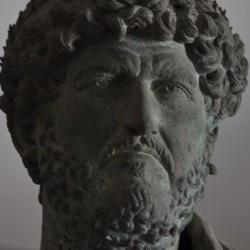
Adana, Portrait of Hadrian |
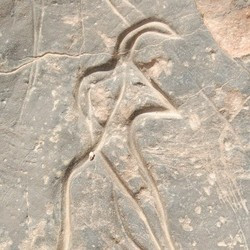
A strange addax, or a man with a mask? |
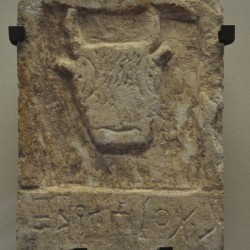
Dedication by Ilîmagud Mayfa |
Adrianople (378 CE)
Battle of Adrianople (378 CE): important battle in which an army of Germanic tribes defeated a Roman army. Büyükdöllük On 9 August…Adrou
Adrou or Adroa: Late Roman fortress, just east of Petra, modern Udruh.History Barracks Mentioned by Ptolemy as a town; this must originally…Aedile
Aedile: Roman magistrate, responsible for the Games and the maintenance of the temples.The original tasks of the two plebeian aediles are unclear. The name suggests that they had something to do with an aedes ('shrine'), but the Greek translation agoranomos…Aegae (Vergina)
Aegae: ancient capital of Macedonia, site of the royal cemetery. Theater Aegae was the old capital of Macedonia and always remained an…
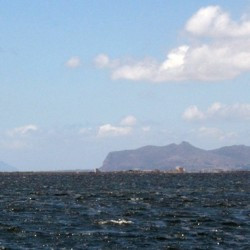
The Aegates Islands: Favignana (ancient Aegusa) to the right and Maréttimo (Hiera Nesos) to the left in the distance. |
Aegina
Aegina (Greek Αίγινα): main island in the Saronic Gulf, south of Athens and east of Corinth.Early History Aegina, Tombstone of a young man, holding…
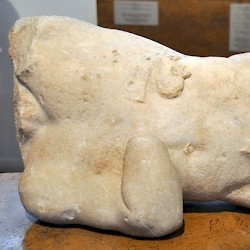
Aegina, Temple of Apollo, Statue of a wounded warrior |
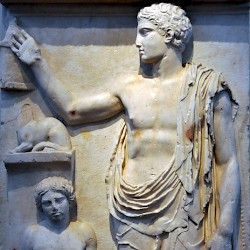
Aegina, Tombstone of a young man, holding a bird |